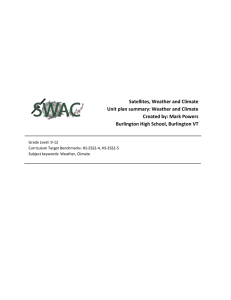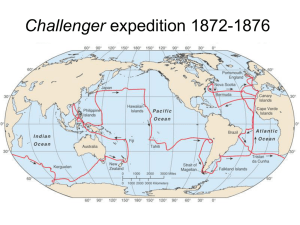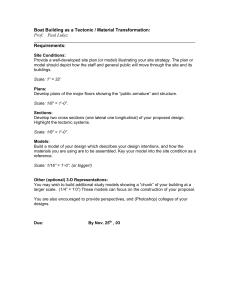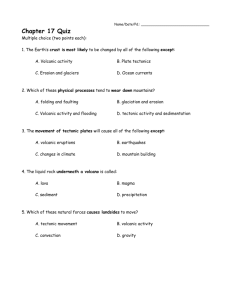Earth and Space Science Stage I – Desired Results
advertisement
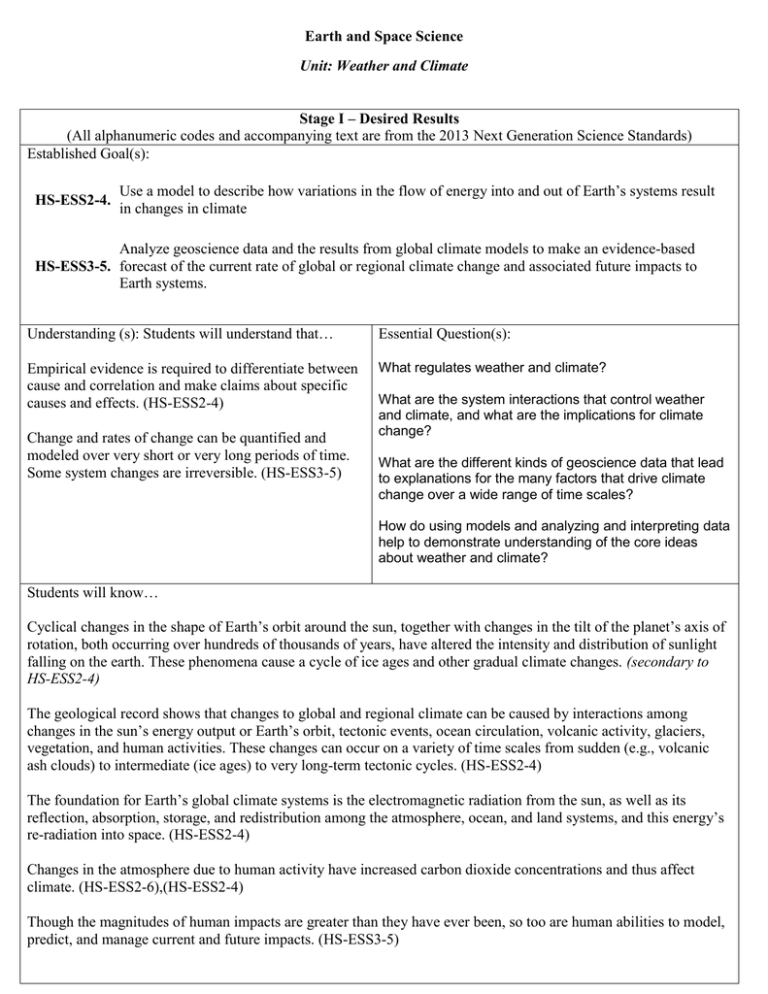
Earth and Space Science Unit: Weather and Climate Stage I – Desired Results (All alphanumeric codes and accompanying text are from the 2013 Next Generation Science Standards) Established Goal(s): HS-ESS2-4. Use a model to describe how variations in the flow of energy into and out of Earth’s systems result in changes in climate Analyze geoscience data and the results from global climate models to make an evidence-based HS-ESS3-5. forecast of the current rate of global or regional climate change and associated future impacts to Earth systems. Understanding (s): Students will understand that… Essential Question(s): Empirical evidence is required to differentiate between cause and correlation and make claims about specific causes and effects. (HS-ESS2-4) What regulates weather and climate? Change and rates of change can be quantified and modeled over very short or very long periods of time. Some system changes are irreversible. (HS-ESS3-5) What are the system interactions that control weather and climate, and what are the implications for climate change? What are the different kinds of geoscience data that lead to explanations for the many factors that drive climate change over a wide range of time scales? How do using models and analyzing and interpreting data help to demonstrate understanding of the core ideas about weather and climate? Students will know… Cyclical changes in the shape of Earth’s orbit around the sun, together with changes in the tilt of the planet’s axis of rotation, both occurring over hundreds of thousands of years, have altered the intensity and distribution of sunlight falling on the earth. These phenomena cause a cycle of ice ages and other gradual climate changes. (secondary to HS-ESS2-4) The geological record shows that changes to global and regional climate can be caused by interactions among changes in the sun’s energy output or Earth’s orbit, tectonic events, ocean circulation, volcanic activity, glaciers, vegetation, and human activities. These changes can occur on a variety of time scales from sudden (e.g., volcanic ash clouds) to intermediate (ice ages) to very long-term tectonic cycles. (HS-ESS2-4) The foundation for Earth’s global climate systems is the electromagnetic radiation from the sun, as well as its reflection, absorption, storage, and redistribution among the atmosphere, ocean, and land systems, and this energy’s re-radiation into space. (HS-ESS2-4) Changes in the atmosphere due to human activity have increased carbon dioxide concentrations and thus affect climate. (HS-ESS2-6),(HS-ESS2-4) Though the magnitudes of human impacts are greater than they have ever been, so too are human abilities to model, predict, and manage current and future impacts. (HS-ESS3-5) Students will be able to… Use a model to provide mechanistic accounts of phenomena. (HS-ESS2-4) Analyze data using computational models in order to make valid and reliable scientific claims. (HS-ESS3-5) Understand that science investigations use diverse methods and do not always use the same set of procedures to obtain data. (HS-ESS3-5) Describe how new technologies advance scientific knowledge. (HS-ESS3-5) Model how science knowledge is based on empirical evidence. (HS-ESS3-5) Describe how science arguments are strengthened by multiple lines of evidence supporting a single explanation. (HS-ESS2-4),(HS-ESS3-5) Performance Task(s): Stage II – Assessment Evidence Other Evidence: Weather data collection and analysis project Prehistoric climate proxy data project Daily weather cause and effect discussion Weather and climate minute Internet assignments Daily formative assessment Weekly quiz Summative assessment Stage III – Learning Plan Learning Activities (Opportunities): Text reading and outlining Student led classroom discussion Lab activities Internet resource assignments Collaborative research and project
